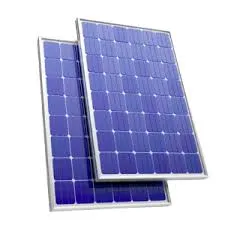Innovative Thin Solar Panels for Efficient Energy Solutions in Limited Spaces
The Rise of Thin Solar Panels A Sustainable Future
As the global demand for renewable energy continues to grow, advancements in solar technology have taken center stage. One of the most promising developments in this field is the emergence of thin solar panels. Unlike traditional solar panels, which are bulky and rigid, thin solar panels offer a lightweight, flexible alternative that is transforming how we harness solar energy.
What Are Thin Solar Panels?
Thin solar panels, also known as thin-film solar cells, are made from layers of photovoltaic material that are only a few micrometers thick. The key materials used in these panels include cadmium telluride (CdTe), copper indium gallium selenide (CIGS), and organic photovoltaics. These materials allow for a significant reduction in material usage, making thin solar panels much lighter and easier to integrate into various applications compared to their crystalline counterparts.
Advantages of Thin Solar Panels
1. Flexibility and Versatility One of the most significant advantages of thin solar panels is their flexibility. This characteristic enables them to be applied to a wide variety of surfaces, including curved and irregular shapes. This opens up new opportunities for integration in building materials, vehicles, and even wearable technology.
2. Lightweight Nature Traditional solar panels can be heavy and require a solid mounting structure. Thin solar panels, on the other hand, can be installed on rooftops, vehicles, and other structures without the need for extensive reinforcement. This characteristic makes them ideal for applications where weight is a concern, such as on the roofs of RVs or boats.
3. Cost-Effectiveness The production process for thin solar panels can be less energy-intensive than that of traditional silicon-based panels. This, combined with lower material costs, leads to potential savings. As technology advances, these cost benefits are likely to increase, making thin solar panels an attractive option for consumers and businesses alike.
4. Performance in Low Light Conditions Thin-film solar cells generally perform better than traditional panels in low-light conditions and higher temperatures. This makes them particularly advantageous for regions where sunlight is inconsistent, allowing for better energy production throughout the day.
thin solar panels

Challenges Facing Thin Solar Panels
Despite their numerous advantages, thin solar panels face several challenges that hinder their widespread adoption.
1. Efficiency Currently, thin solar panels have lower energy conversion efficiency compared to traditional silicon-based panels. While advancements continue to be made, the efficiency gap remains a barrier for some consumers who prioritize energy output.
2. Durability and Lifespan Thin solar panels may have shorter lifespans when compared to traditional panels, which can lead to concerns about long-term investment. Manufacturers are continuously working to improve durability, but this remains a consideration for prospective buyers.
3. Market Awareness As with any emerging technology, there is a level of market unfamiliarity with thin solar panels. Educating consumers and businesses about the benefits and capabilities of these panels is essential for gaining market traction.
The Future of Thin Solar Panels
The future of thin solar panels looks promising as research and development efforts continue to drive performance improvements. Innovations in materials science are leading to more efficient and durable thin-film technologies. Additionally, with the increasing emphasis on sustainability, both consumers and industries are gradually shifting towards more adaptable and efficient renewable energy solutions.
Governments and organizations are beginning to recognize the potential of these panels for urban environments, where space is often limited, and aesthetics play a crucial role. Furthermore, as the technology matures, economies of scale are expected to reduce costs even further, positioning thin solar panels as a more viable option for mainstream energy generation.
In conclusion, thin solar panels represent a significant leap forward in solar technology, providing flexible, lightweight, and cost-effective solutions for renewable energy. While challenges remain, ongoing innovation and increased market acceptance are likely to position thin solar panels as a vital component of our sustainable future. As we move towards a greener planet, embracing such technologies can help us harness the sun’s energy more efficiently and effectively, paving the way for a cleaner, brighter tomorrow.
-
String Solar Inverter: The High-Efficiency Solution for Smart Solar EnergyNewsJul.14,2025
-
Revolutionizing Rooftop Energy with the Power of the Micro Solar InverterNewsJul.14,2025
-
Power Independence with Smart Off Grid Solar Inverter SolutionsNewsJul.14,2025
-
On Grid Solar Inverter: Powering the Future with Smart Grid IntegrationNewsJul.14,2025
-
Monocrystalline Solar Panels: High-Efficiency Power for the Future of Clean EnergyNewsJul.14,2025
-
Bifacial Solar Panel: A Smarter Investment for Next-Generation Energy SystemsNewsJul.14,2025







